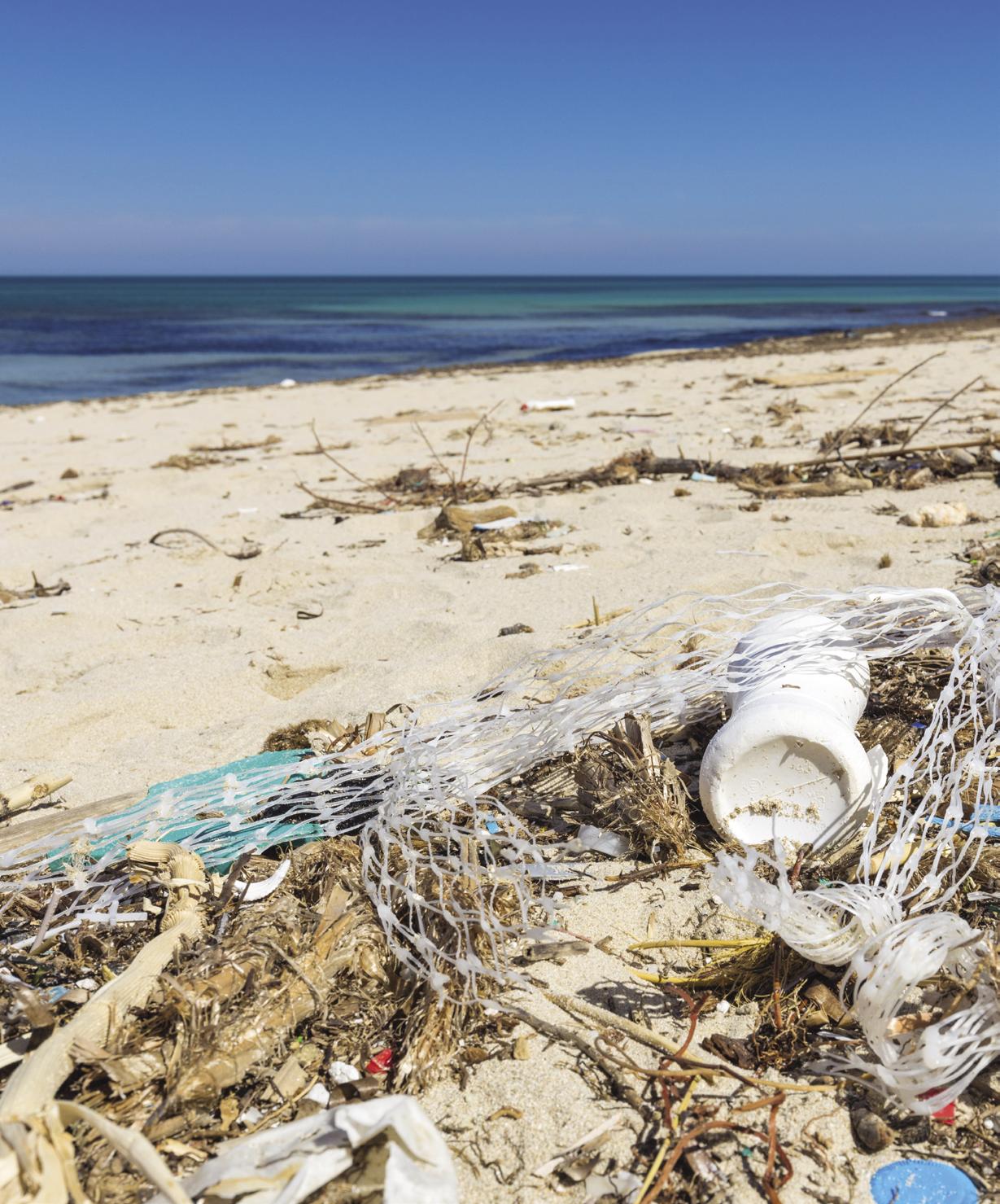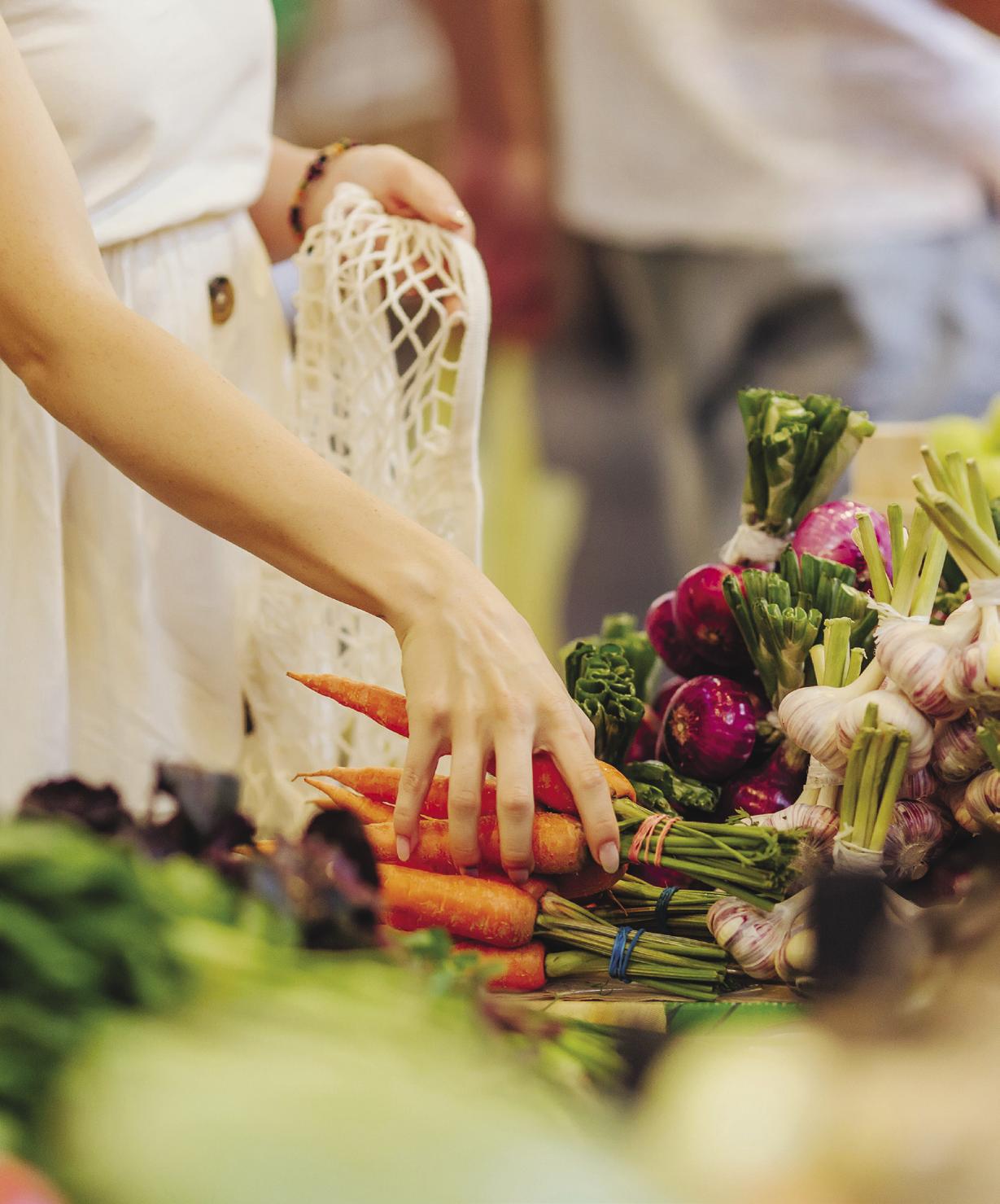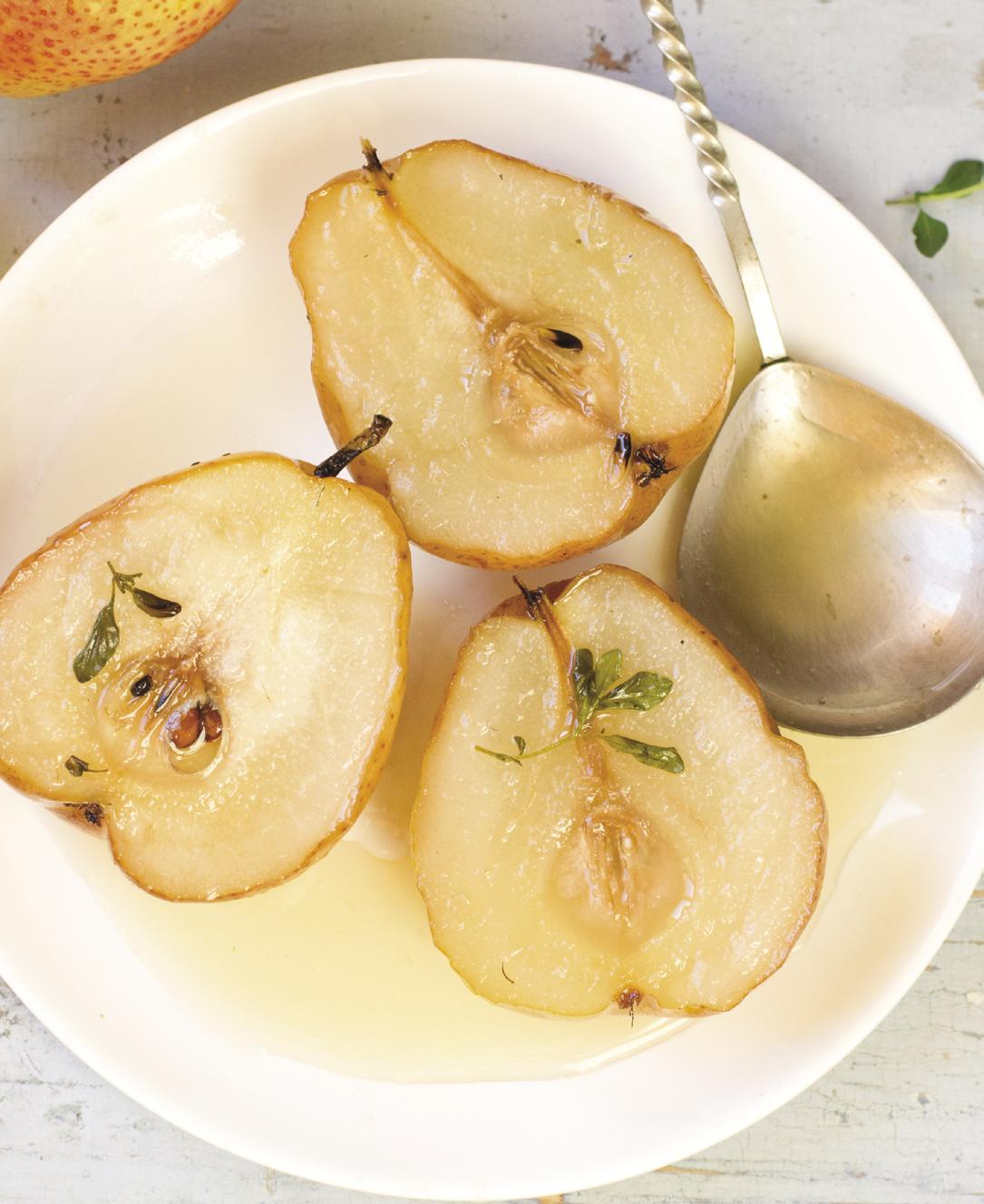
6 minute read
Mother Earth is feeling the change
Mother Earth is
Feeling the Change
Advertisement
BY CATHERINE MORAN
The next time you lament the private summers brought about by changing hormones, spare a thought for Mother Earth. Instead of hormones, greenhouse gases (or GHGs)are changing the way the global climate system works and causing higher temperatures and heatwaves across the planet, as well as other changes When we were kids, my brother draped a blanket over some chairs to make a cubby, inadvertently (or so I believed) trapping our body heat - and other gases - inside. In a similar way, the high concentrations of GHGs in our atmosphere today act like my brother’s blanket, holding heat and energy around our planet and changing global patterns of temperature, rainfall and extreme weather.
Mother Earth will endure through climate change, but life on earth will be dramatically changed, including for humans. No matter where we live or what we do for work, humans depend on a healthy natural environment, obviously to supply food, clean air and freshwater, as well as for processes like pollination and for the mental and emotional benefits of being in nature.
But we can’t expect Mother Earth to continue to nurture and protect life on our planet while heatwaves send the mercury soaring, uncontrollable bushfires blacken vast areas of land and changing rain patterns mean that some regions are drying out, while others are flooded time and again. How can the mother of all life shield us as polar ice melts and sea levels rise, flooding coastal areas and contaminating freshwater with salt? Can we really bemoan the moody, unpredictable behaviour of nature in these changing conditions?
It’s not only humans feeling the heat. First Nations Peoples notice plants fruiting and flowering out of season while animals are spotted eating new things. In the oceans, fishers now catch fish their fathers
rarely saw. Farmers notice changes in the numbers of insects that pollinate their crops. Doctors report more tropical diseases. Rangers only find certain mammals sheltering deeper in the forest, and coastal dwellers see mangroves growing further
upstream.
These changes are examples of nature adapting to increasing temperatures, changing rainfall, rising sea levels, more fire weather and greater disturbance from more intense storms. They bear the hope that many species will be able to persist in a different climate. By adjusting their behaviour, finding protection from extreme weather events and colonising areas with more comfortable climate conditions, many organisms will be around for some time yet.
But there is no aircon in nature and all living species can only tolerate so much change in the climate. Because change is happening so fast, some organisms can’t adapt their behaviour, physiology or where they live quickly enough. Even in cases where suitable climate conditions exist in another
location, organisms might not be able to get to it because of barriers like dams or land clearing.
We’re shocked by images of mass die-offs during heat waves, or the charred bodies of small animals
after the passage of bushfires. Old people talk about that strange and beautiful bird they no longer see in the yard. Tropical tourists are disappointed by the dull white of bleached coral reefs.
We will see more of these losses. Numbers of
many species are plummeting. Some species have already gone extinct and many more are on the brink. Humans can have little direct control over
climate adaptation in natural systems, but how we use the planet can make it easier for nature to take its course. Nature needs enough space to adapt and humans can create options for the adaptation of natural systems by halting the further destruction or degradation of habitats, by restoring as much habitat as possible, by removing barriers to movement and controlling other threats such as introduced predators and chemical and plastic pollution.
Most importantly, humans have the key role in mitigating climate change. This means drastically


reducing the amount of GHGs we pump into the atmosphere. This is the only way to limit the amount of climate change that we experience. Without serious mitigation action soon, the scale of change will be so great that natural systems will be unrecognisable, and Mother Earth simply will not be able to sustain humans where and how we currently live.
Practical and realistic solutions exist for producing energy without generating enormous amounts of GHGs. We can play a role in making these a reality by encouraging genuine, large-scale investment by government and business in the ongoing development of these technologies. As individuals, we can also change our own habits to reduce the GHGs generated by our lifestyle. For some, this includes limiting air travel, for others, it involves sourcing food and other goods locally or eating a plant-dominated diet.
In addition to putting less GHGs into the atmosphere, the climate change solution includes absorbing more of the GHGs already there. Planting trees on land and restoring coastal and marine environments are two important ways of doing this. These win-win actions also increase the options for nature to adapt to climate change. Finally, we can all play a crucial role in making it normal to talk about climate change. Climate change affects everyone, everywhere one way or another. This provides a great opportunity for local communities to have informed conversations about
how to support Mother Earth to support us.
What can I do about climate change?
✔ Buy local food and other goods ✔ Limit air travel and buy carbon offsets when you fly ✔ Walk, cycle or take public transport as much is possible ✔ Eat a plant-dominated diet ✔ Install domestic solar panels or select renewable energy options ✔ Put your money into institutions that invest in renewable energy and environmental restoration
✔ Repair and reuse instead of buying new ✔ Join a tree planting group and support environmental conservation and restoration
organisations ✔ Have respectful conversations about reducing and absorbing GHG’s ✔ Get involved in community discussions about the future of where you live ✔ Support decision makers who recognise the importance of acting to limit climate change.
About the Writer
Catherine Moran has a PhD in conservation ecology and has a passion for facilitating the development and use of knowledge to manage resilient landscapes and communities. With extensive applied research and planning experience in biodiversity conservation, climate change impacts and adaptation and ecological restoration and is skilled in the strategic analysis and interpretation of data and action options.
Subscribe to WB40 from 1st April - 31st May and you could win this luxury prize!

Win!
All products in our Me Time. Mindful Gift Box have been thoughtfully curated to give a one of a kind indulgent experience.
Included in the box:
✔ A Me Time. Journal ✔ A Box of Me Time. Assorted Colouring Pencils ✔ A Me Time. Pen ✔ A Balanced Ground Cleanse & Restore Body Salts (185g) ✔ A Myles Gray Crystal Infused Soy
Candle - Equilibre (55 hour burning time) ✔ A Personalised Me Time. Gift Card All gifts are packaged in our luxe, black Me Time. gift box.
Mindful Gift Box Pack value: $119.00

metimejustforme.com
Subscribe to Wb40
Subscribe from 1st April to 31st May and you could win a fabulous prize pack from Me Time. Just For Me.
Plus:
• YOU’RE CREATING OPPORTUNITIES FOR FEMALE CREATIVES!
(2020 & 2021 have been hard on the arts community)
• YOU’RE HELPING TO SUPPORT ORGANISATIONS THAT SUPPORT
WOMEN!
• YOU’RE SUPPORTING WOMEN FORTY & OVER TO TELL THEIR
STORIES
(Our voices matter!)
• SAVE ON COVER PRICE
• FREE DELIVERY - AUSTRALIA ONLY
(International Delivery Available at cost)
• NEVER MISS AN ISSUE
ANNUAL (6 ISSUES) PRINT $88.00 | PER ISSUE PRINT $14.90 ANNUAL (6 ISSUES) DIGITAL $46.95 | PER ISSUE DIGITAL $7.99
For Subscriptions or to purchase the mag, head to wb40.com











